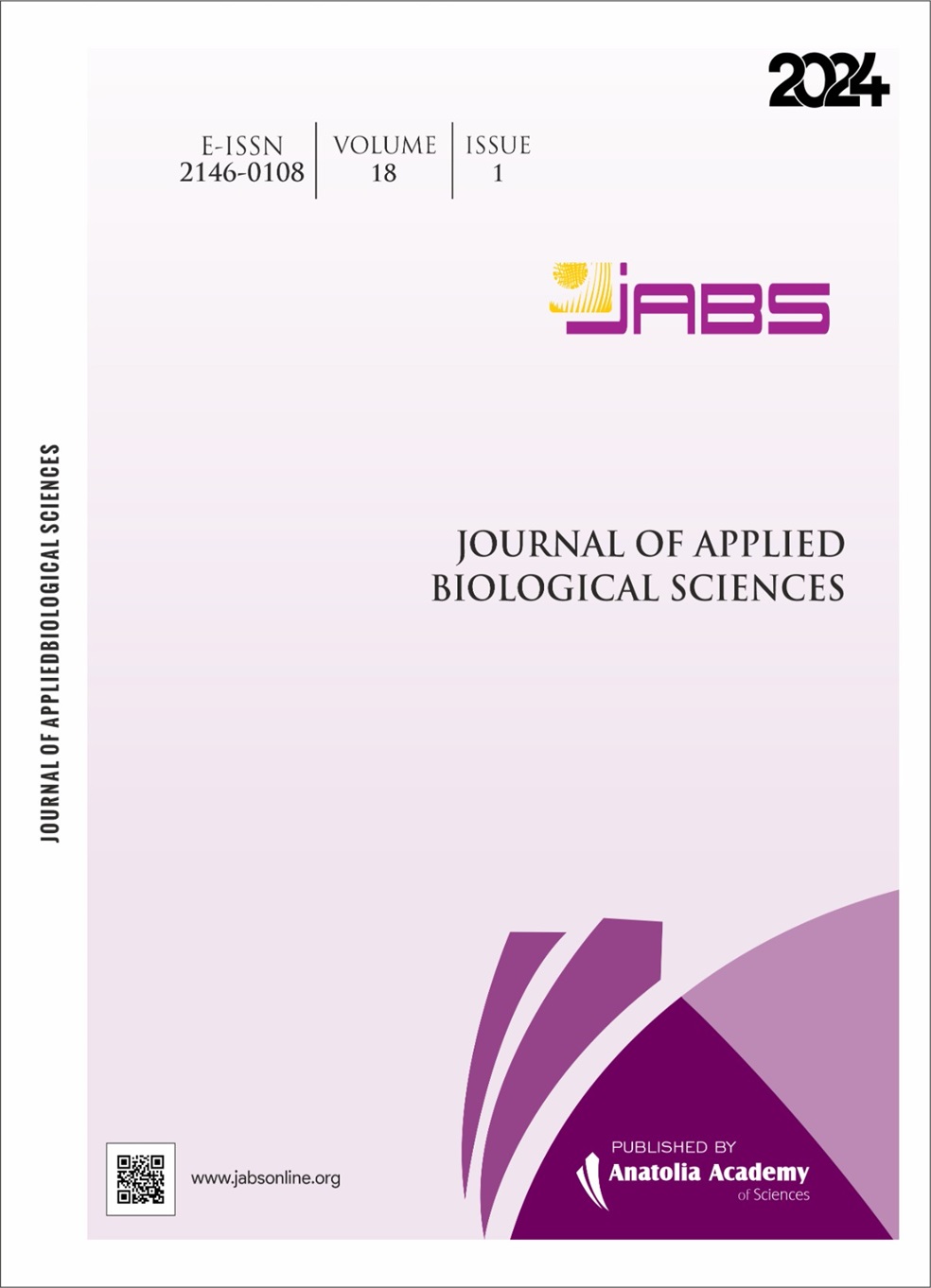ESTIMATION OF IMPACT OF CHLORELLA VULGARIS ON CHEMICAL OXYGEN DEMAND (COD) AND TOTAL PHOSPHATE (TP) IN WASTE AND RIVER WATER
DOI:
https://doi.org/10.71336/jabs.1133Keywords:
Algae, water treatment, chemical oxygen demand, total phosphate, absorbanceAbstract
Waste water treatment by the use of non-micro algal or physiochemical methods often result in being exhaustive and inefficient ways. Microalgae have the ability to take up nutrients while thriving in water bodies. Phosphorous, nitrogen and other trace elements are present in waste water which the algae need for their growth. Algae which was obtained from waste water was inoculated in waste and river water for a period of 14 days as testing for chemical oxygen demand and total phosphate was carried out on a weekly basis along with the observance of absorbance by the use of a spectrophotometer. A decrease in the content of total phosphate and chemical oxygen demand was observed. The average efficacy of COD reduction was 60% for waste water and 77.2% for river water and the average efficacy of total phosphate reduction was 87% for waste water and 13% for river water. Similarly a decrease in absorbance and increase in transmittance was observed in both water samples. The average efficacy of absorbance reduction was almost 100% for both samples. But due to the sudden increase in concentrations it was revealed that due to the lack of aeration and a carbon source, the algae had died and started to decompose. This study demonstrates that algal treatments are achievable as an eco-friendly alternative and that algal bioremediation could be incorporated with other methods of treatment or adopted as the single method for the treatment of wastewater.
References
Wicker, R., & Bhatnagar, A. (2020). Application of Nordic microalgal-bacterial consortia for nutrient removal from wastewater. Chemical Engineering Journal, 398, 125567. doi: 10.1016/j.cej.2020.125567 DOI: https://doi.org/10.1016/j.cej.2020.125567
Bhagea, R., Bhoyroo, V., & Puchooa, D. (2019). Microalgae: the next best alternative to fossil fuels after biomass. A review. Microbiology Research, 10(1). doi: 10.4081/mr.2019.7936. DOI: https://doi.org/10.4081/mr.2019.7936
Varshney, P., Mikulic, P., Vonshak, A., Beardall, J., & Wangikar, P. P. (2015). Extremophilic micro-algae and their potential contribution in biotechnology. Bioresource technology, 184, 363-372. DOI: https://doi.org/10.1016/j.biortech.2014.11.040
Mohsenpour, S. F., Hennige, S., Willoughby, N., Adeloye, A., & Gutierrez, T. (2021). Integrating micro-algae into wastewater treatment: A review. Science of the Total Environment, 752, 142168. DOI: https://doi.org/10.1016/j.scitotenv.2020.142168
Beuckels, A., Smolders, E., & Muylaert, K. (2015). Nitrogen availability influences phosphorus removal in microalgae-based wastewater treatment. Water research, 77, 98-106. DOI: https://doi.org/10.1016/j.watres.2015.03.018
Anye Cho, B. (2018). The development and characterization of a thermosiphon photobioreactor for the cultivation of photosynthetic bacteria (Doctoral dissertation, Stellenbosch: Stellenbosch University).
Mao, Y., Xiong, R., Gao, X., Jiang, L., Peng, Y., & Xue, Y. (2021). Analysis of the Status and Improvement of Microalgal Phosphorus Removal from Municipal Wastewater. Processes, 9(9), 1486. DOI: https://doi.org/10.3390/pr9091486
Prakash, C., Agrawal, K., Verma, P., & Chaturvedi, V. (2021). Microalgae-Mediated Elimination of Endocrine-Disrupting Chemicals. In Phycology-Based Approaches for Wastewater Treatment and Resource Recovery (pp. 127-148). CRC Press. DOI: https://doi.org/10.1201/9781003155713-5
Silkina, A., Ginnever, N. E., Fernandes, F., & Fuentes-Grünewald, C. (2019). Large-scale waste bio-remediation using microalgae cultivation as a platform. Energies, 12(14), 2772. DOI: https://doi.org/10.3390/en12142772
Dhandayuthapani, K., Sarumathi, V., Prasad, R., Pancha, I., Gupta, S. K., & Nema, A. K. (2020). An Overview of Industrial Wastewater Management Using Integrated Algal Technologies. Algae and Sustainable Technologies, 141-172. DOI: https://doi.org/10.1201/9781003001911-9
Jern, N. W., Khursheed, A., & Kazmi, A. A. (2019). Post Treatments of Anaerobically Treated Effluents.
Lehman, P. W., Kurobe, T., Lesmeister, S., Baxa, D., Tung, A., & Teh, S. J. (2017). Impacts of the 2014 severe drought on the Microcystis bloom in San Francisco Estuary. Harmful Algae, 63, 94-108. DOI: https://doi.org/10.1016/j.hal.2017.01.011
Downloads
Published
How to Cite
Issue
Section
License
Copyright (c) 2024 Journal of Applied Biological Sciences

This work is licensed under a Creative Commons Attribution-NonCommercial-NoDerivatives 4.0 International License.


